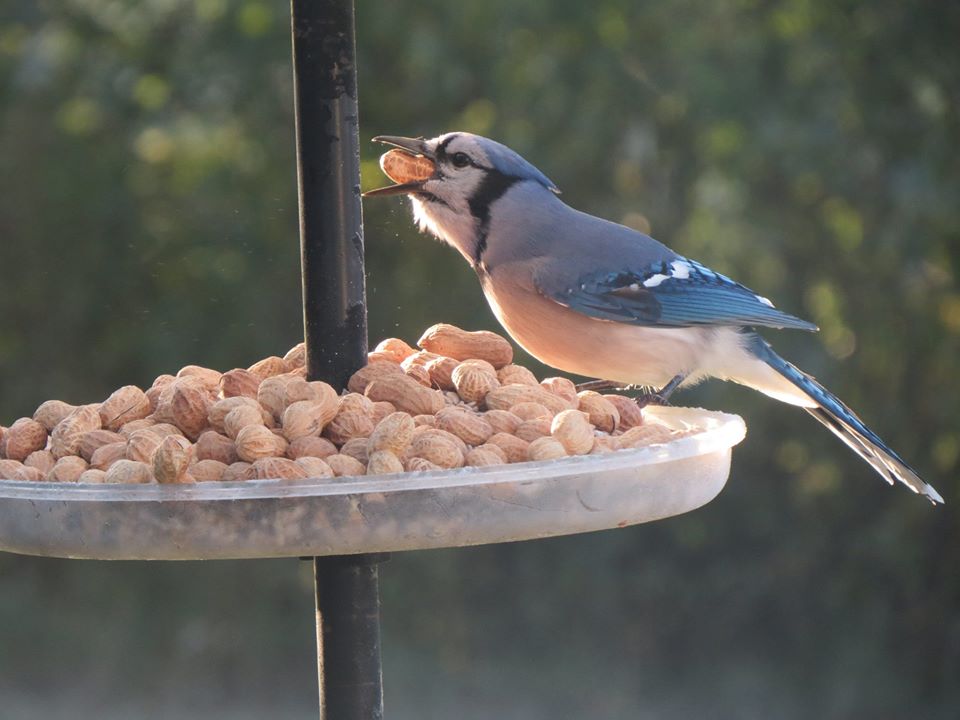Sherrie Versluis

Feathered Friends
The hobby of attracting and feeding wild birds is the second biggest hobby in all of North America. Gardening is number one but for many, the two go hand-in-hand. The joy of feeding wild birds has been shown to reduce blood pressure, improve symptoms of depression, and provide great pleasure for those who are homebound. The antics and behaviour of birds is something people of all ages can enjoy. With many people currently working from home, it’s the perfect time to setup a feeding station. Nature is our greatest medicine and it’s important to connect with it to stay grounded and calm. To see an array of species throughout the year, having the right feeders with the right foods can make all the difference in what you attract.
Most people start with a Hopper Feeder and a bag of wild bird mix. Unfortunately, these two items are the least functional of all. This feeder style is the traditional wood feeder with plexi-glass sides. The seed is filled through the roof and comes out the bottom into a trough where the birds perch and eat. Wild bird mixes are sold everywhere from department stores, gardening centres, and even hardware stores. Sadly, there are no quality control systems in place to ensure what you are buying is even edible. The majority of ingredients in these mixes are not eaten by any type of songbird. For this reason, they will come to a feeder and throw the food everywhere making a big mess. Hopper feeders are perfect for encouraging messes as the troughs make it easy for birds to shovel the seed onto the ground. They are tossing all this seed down because they are digging for something to eat! Most mixes consist of wheat, corn, oats, barley, and a small amount of millet and sunflowers. This is a fine mix if you are feeding geese, turkeys, or ducks but not songbirds. Once all the seed has been spilled onto the ground, it will remain there until it sprouts into the finest garden you never intended to grow or, you attract some furry friends rather than feathered.
These seed mixes not only contain inedible foods but, even the quality of them is questionable. Often these seeds have not been approved for human consumption so they are bagged and sold as wildlife feed. No wonder the birds throw it to the ground! Another problem with mixes is the potential of attracting House sparrows. They live in large flocks and when they descend on a feeder all other birds will be chased away. House sparrows will peck at other birds and even pull feathers to ensure they rule the roost.
To try and control the undesirable behaviour of House sparrows, consider filling one bird feeder, any style of feeder will do, with pure white millet. This is their favourite food and wherever it is, the majority of the sparrows will be there. This is almost like a ‘bait’ to keep them from other feeders. Make sure it is as far as possible from other feeders. Then, closer to your house where your best viewing spot is, put out another feeder with black oil sunflower seed. This is the most desired seed by almost all songbirds and will attract the widest variety of birds throughout the year. A favourite style of feeder for this food is called a Tube feeder and often comes with a tray attached to the bottom to keep the ground clean and to encourage all sizes of birds like Blue jays.

Suet feeders are excellent attractions for woodpeckers, chickadees, and nuthatches and the summer version of this food can attract even more species like orioles and warblers. Be wary as many suet cakes are filled with the wild bird mix described earlier and will not be successful. Choose ones filled with nuts, fruit, or insects.
Nyjer feeders are a great way to attract colourful finches especially the American goldfinch found throughout the summer season. Nyjer seed is very tiny and requires a special feeder or it will just spill out or blow away. Other finches like Red polls will visit this feeder in winter.
Platform feeders are a great way to accommodate larger species like Blue jays, Mourning Doves, Northern Cardinals, and Grosbeaks. These open concept feeders are a nice way to offer a variety of foods by placing a handful of each like, black oil and striped sunflower seed, and peanuts.
There are many styles of specialty feeders to offer specific foods like peanuts in and out of the shell, mealworms, and compressed seed cakes. For the spring and summer season there are oriole feeders to offer oranges, grape jelly, or nectar and we can’t forget about hummingbirds!
Any time is a great time to start feeding wild birds and the rewards are plentiful. You can fill your yard with colours and music that only nature can offer in such a beautiful way. Using the right products will ensure you and the birds are happy as a lark! Happy birding to you.
Sherrie Versluis is the owner of The Preferred Perch Wild Bird Specialty & Gift Store. www.thepreferredperch.ca. We are currently offering delivery and curbside service and other options, please call us with any questions

